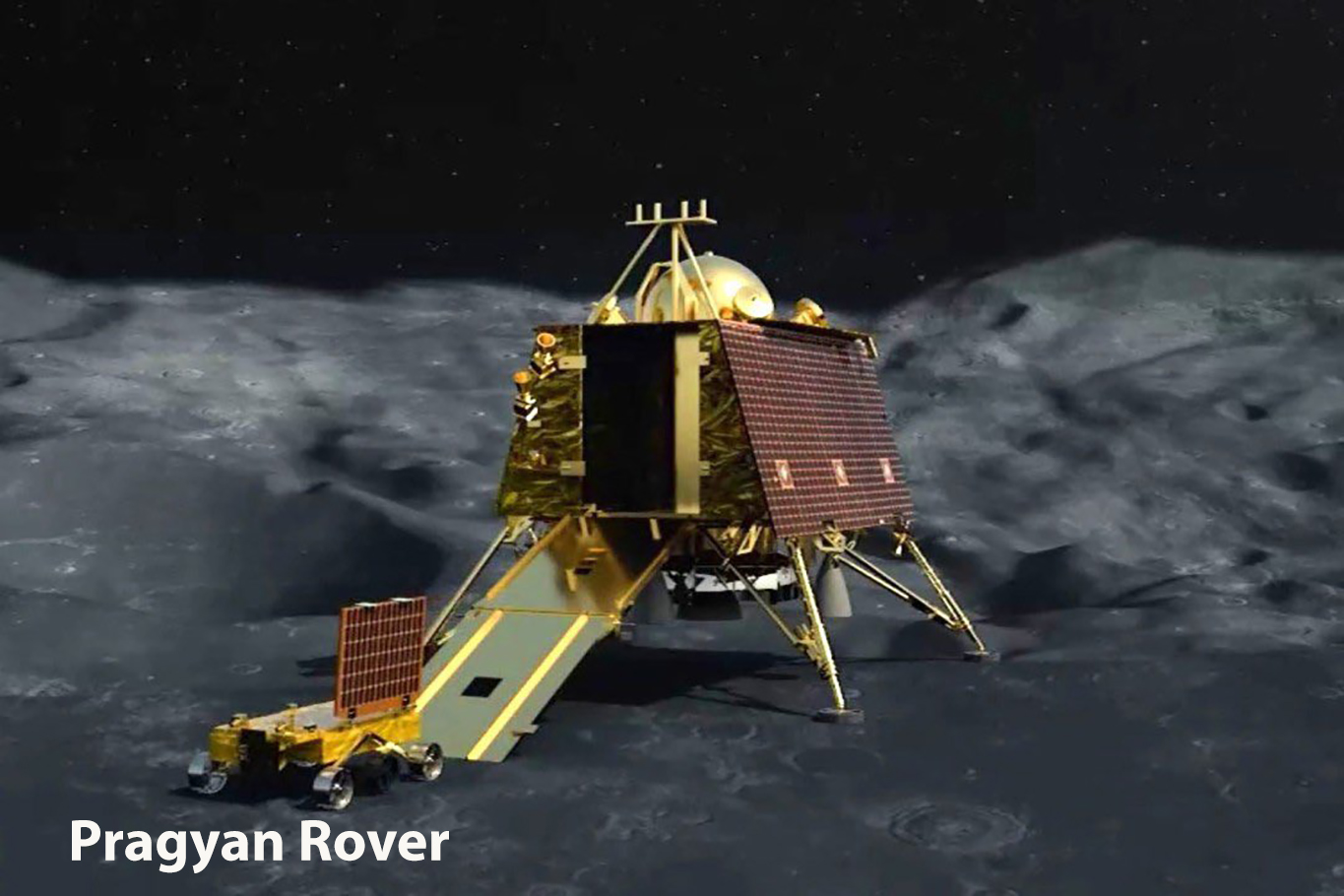 Following Chandrayaan-3’s historic soft landing near the unexplored South Pole of the moon, an essential phase commenced—rolling out the Pragyan rover. The rover’s 14-day mission involves collecting scientific data for transmission to ISRO, the space agency.
Following Chandrayaan-3’s historic soft landing near the unexplored South Pole of the moon, an essential phase commenced—rolling out the Pragyan rover. The rover’s 14-day mission involves collecting scientific data for transmission to ISRO, the space agency.
Before launching the rover, the lunar dust stirred by Vikram lander’s touchdown had to settle. This step was crucial to prevent dust particles from harming the rover’s sensitive equipment and cameras.
The 6-wheeled ‘Pragyan’ rover, equipped with multiple cameras and solar panels, is set to explore the moon using chemical tests and image transmission. Over 14 days (a lunar day), the rover will conduct experiments that include analyzing soil composition, documenting lunar polar heat retention, assessing seismic activity, and measuring Earth’s distance from the lunar South Pole.
Simultaneously, the ‘Vikram’ lander will deploy four scientific payloads to study the moon’s temperature and subsurface characteristics.
Chandrayaan-3’s objectives encompass a safe landing, rover mobility, and in-situ scientific tests to identify water presence and soil attributes on the moon’s South Pole. The ‘mothership’ orbiting the moon will conduct experiments studying Earth from lunar orbit.
With Chandrayaan-3’s triumph, India joins the ranks of the US, Russia, and China, becoming the fourth nation to achieve a lunar spacecraft landing.












